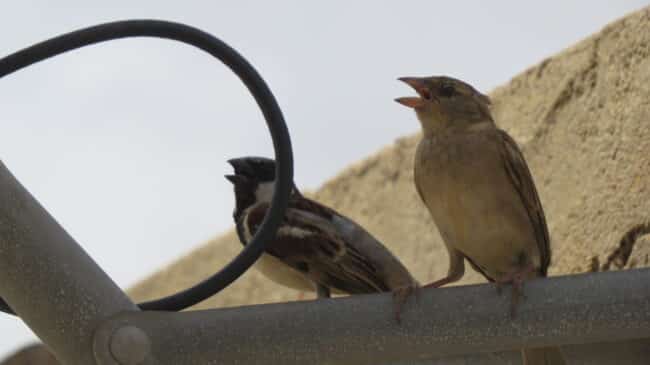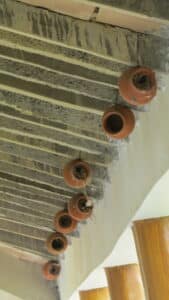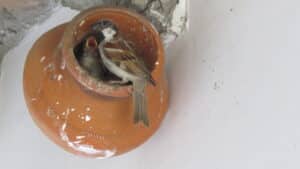In my third year of school, I read a story set in a national park called Adventure in Dhudhwa. The main character was a young boy whose adventures in Dhudhwa National Park inspired me to learn more about wild animals – I wanted to see every species on Earth and get to know them all. I still have the diary where I glued pictures of animals and information published in newspapers and magazines as a young girl.
After my studies in Forestry and Environment Management, I started working on various conservation projects, implementing conservation activity through community involvement. I asked myself- “ Why not bring conservation into my own home?” For this purpose, I began the project to construct homes for my most beloved species, my winged friends, the House Sparrow. These were the first bird species I remember helping, and a frequent sight as I looked out the classroom window as a curious child. During summer vacations, I would find baby sparrows who had fallen from their nests in our walls, then feed and nurse them back to health.
Since my childhood, human activity has impacted the non-human world everywhere and has led to the decline in population of many species. The House Sparrow is one such species, with numbers dwindling in urban environments. Due to rapid change in infrastructure, development activities, and lifestyle, the modern concrete building leaves no room for sparrows to share in our human spaces.

A pair of sparrows vocalizing. Photo credit: Astha Chaudhary
These sociable birds had adapted to coexist with primitive humans around 11,000 years ago when early agriculture was first introduced. According to the British Trust for Ornithology, the number of sparrows has gone down by almost 70% between 1977 and 2018, with an estimated 30 million individuals lost to date. One main reason behind this has been the lack of roosting sites due to habitat loss. Unfortunately, there are still few places for sparrows to make their nest in our cities today.
As an ecologist, my love for sparrows pushed me to provide space these tiny birds need. To start, I used the nests, made of cardboard in a square shape with one small hole, given out for free by the State Department of Uttar Pradesh for World House Sparrow Day in 2018. I took 5 of these from the forest department and placed them at four corners of my home, and waited for the sparrows to come.
After 6 months of observation, I found that the cardboard-like material was neither good for sparrows nor for other birds. The nest was very light in weight and prone to getting wet in the rainy season. Realizing that this first attempt was a failure made me sad and forced me to re-think my strategy.
At this point, I decided to start action-oriented research in my own home: an experimental set of houses for house sparrows. I choose to set out an area for roosting and nesting rather than placing the typical artificial nest, as I strongly believe that nature thrives when left to grow in its own way — All we have to provide is just the space around us.
The main challenge was where, when and how to choose the area for the nest space. I recalled that house sparrows generally prefer to stay in holes made in the walls of houses, so I decided to provide space in earthen pots which would be installed at around 9-10 feet height, attached to the walls of my house.

Earthenwear pots installed at 9-10 feet height for sparrow nests. Photo credit: Astha Chaudhary
I went to pottery-making artisans and asked them to make the pots as homes for birds, in small and medium sizes. I gave the measurement of around 3-to-5-inch circumference and asked for 10 pieces of each type. When the pots were done, I placed these earthen nests in every direction.
For a moment, I got emotional. I dearly missed their chirping voices and their companionship, and I wrote a letter to them.
“Dear Sparrow, where have you gone? Please come home soon.”
After half a year, I began to see sparrows coming to make their nest inside the pots, but only in the pots that did not get direct sunlight. I monitored the pots for another year, and found that the sparrows repeatedly made their nest in those same pots placed away from sunlight, with pots facing the other direction still unfilled or empty. Noticing that they even like the medium-sized pots more than the smaller ones, I ordered more medium sized pots and installed them to ensure one meter distance between each pot. Last year, two pairs even chose pots installed where the sun light came directly.

A sparrow feeding its young. Photo credit: Astha Chaudhary.
After this four-year journey of observation and experiment, I found which spots the sparrows prefer for nesting and which ones they do not like much and often ignore. With this experience, I feel that conservation is all about learning, relearning, and improvising our work, effort and knowledge. Currently, more than 100 sparrows stay at my home. Most people may think that this project is just an array of artificial nests, but for me, it’s a space where the sparrows grow their families by making nests with so much hard work and compassion. This is a home where we can all live together. A house of hope, love, companion and friendship for humans and sparrows. Some of them came, and I am still waiting for more.




